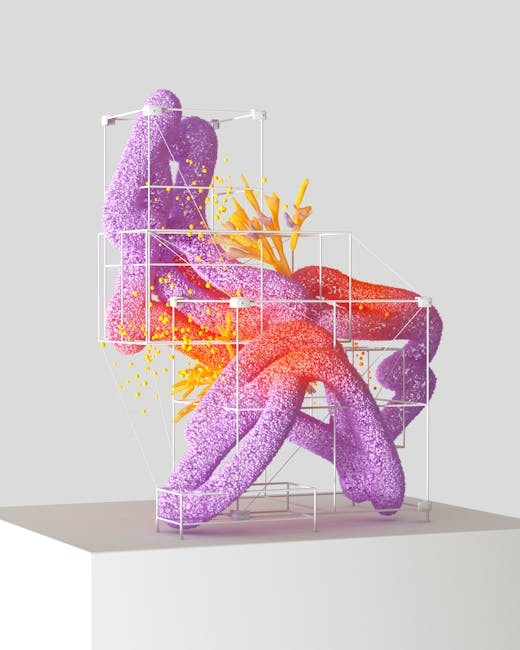
mini maxx v2 installation instructions
Welcome to the Mini Maxx V2 Installation Guide. This comprehensive manual is designed to help you install and configure your Mini Maxx V2 tuner effortlessly, ensuring optimal performance tuning for your vehicle’s engine. Follow the step-by-step instructions carefully to unlock your truck’s full potential safely and effectively.
Welcome to the Mini Maxx V2 Installation Guide
Welcome to the Mini Maxx V2 Installation Guide, your essential resource for successfully installing and configuring the Mini Maxx V2 tuner. This guide is tailored to help you navigate the installation process smoothly, ensuring your vehicle achieves optimal performance. Designed for compatibility with various vehicles, the Mini Maxx V2 offers advanced tuning capabilities, including EGR and DPF delete options, to enhance your driving experience. Follow the step-by-step instructions carefully to avoid complications and ensure proper setup. Whether you’re a novice or experienced user, this guide provides clear, detailed instructions to help you unlock your vehicle’s full potential safely and efficiently. Proper installation is key to maximizing performance and maintaining your vehicle’s health.
About the Mini Maxx V2
The Mini Maxx V2 is a cutting-edge performance tuner designed to enhance your vehicle’s engine capabilities. It offers advanced features such as EGR and DPF delete options, Shift on the Fly (SOTF) tuning, and real-time monitoring of engine parameters. This device is specifically engineered for compatibility with various vehicle models, including Duramax engines, to deliver optimal performance and efficiency. Known for its durability and user-friendly interface, the Mini Maxx V2 is a popular choice among drivers seeking to maximize their vehicle’s potential. With its compact design and robust functionality, it provides a seamless way to adjust engine settings and improve overall driving performance. The Mini Maxx V2 is a powerful tool for those looking to elevate their vehicle’s capabilities without compromising on reliability or ease of use.
Purpose of the Guide
The purpose of this guide is to provide a clear, step-by-step walkthrough of the Mini Maxx V2 installation process. It aims to ensure that users can successfully install, configure, and utilize the device to achieve optimal engine performance. This guide covers essential topics such as pre-installation checks, hardware setup, and post-installation tuning, while avoiding technical jargon to make the process accessible to all users. By following the instructions outlined in this guide, you’ll be able to unlock your vehicle’s full potential safely and efficiently. This comprehensive resource is designed to assist both novice and experienced users in maximizing the benefits of the Mini Maxx V2 tuner.

Pre-Installation Checklist
Ensure vehicle compatibility, gather necessary tools, verify software updates, and perform diagnostic checks before starting the Mini Maxx V2 installation to guarantee a smooth process.
Vehicle Compatibility
The Mini Maxx V2 tuner is specifically designed for select diesel engines, including the Duramax LML and L5P models. Ensure your vehicle is compatible before installation. Check the manufacturer’s list for supported makes and models. The V2 tuner does not support emissions-related components, so emissions must be removed prior to installation. Vehicles equipped with certain sensors, like the crankcase ventilation detection sensor on 2016 Ford Powerstroke 6.7L models, may encounter issues. Verify compatibility to avoid potential issues like diagnostic trouble codes. Always refer to the latest updates from the manufacturer to confirm compatibility with your specific vehicle configuration and year.
Tools and Materials Required
To successfully install the Mini Maxx V2, gather the necessary tools and materials. You will need an OBD-II adapter plug, an HDMI cable, and a compatible SD card preloaded with the Mini Maxx V2 software. Ensure the SD card is named “MINI MAXX” and formatted to FAT file system. A fuse tap is required for connecting the device to your vehicle’s electrical system, specifically for vehicles like the LML. Basic tools such as pliers, screwdrivers, and wrenches may also be needed. Additionally, ensure you have a universal windshield mount and T-slot adapter for securing the device. Refer to the manufacturer’s list for any additional hardware specific to your vehicle model. Proper preparation ensures a smooth installation process.
Software and Firmware Requirements
Ensure your Mini Maxx V2 is equipped with the latest software and firmware for optimal performance. Begin by formatting the SD card to the FAT file system and naming it “MINI MAXX.” Download the updater software from the manufacturer’s website and extract the zipped folder. Use the provided cable to connect the Mini Maxx V2 to your computer and install the updates. Verify that all software components are compatible with your vehicle’s make and model. Avoid using FAT32 or exFAT file systems, as they are not supported. Regularly check for firmware updates to maintain functionality and address any potential issues. If you encounter problems during the update process, consult the user manual or contact technical support for assistance.
Pre-Installation Diagnostic Checks
Before installing the Mini Maxx V2, perform a series of diagnostic checks to ensure your vehicle is ready for the tuner. Start by scanning your vehicle’s computer for any existing Diagnostic Trouble Codes (DTCs) using an OBD-II scanner. Address any active codes to prevent installation issues. Verify that your vehicle’s battery is fully charged and in good condition, as a stable power supply is crucial for proper device function. Inspect the OBD-II port for cleanliness and damage, ensuring a secure connection. For 2016 Ford Powerstroke 6.7L models, note that the Mini Maxx V2 does not support the crankcase ventilation sensor, which may result in a permanent DTC. Always ensure your vehicle is in a safe, stationary condition before proceeding with installation to avoid unexpected issues.
Step-by-Step Installation Process
The Mini Maxx V2 installation process is straightforward; Connect the device to the OBD-II port, link via HDMI, prepare the SD card, install the fuse tap, and securely mount the tuner. Follow each step carefully for optimal performance.
Connecting the Mini Maxx V2 to the OBD-II Port
Locate the OBD-II port, typically found under the dashboard on the driver’s side. Plug the Mini Maxx V2 adapter into this port, ensuring a secure connection. Turn the ignition to the “ON” position but do not start the engine. The device will automatically power on and initialize communication with your vehicle’s ECU. Verify the connection by checking the LED light on the Mini Maxx V2, which should illuminate to confirm proper linking. Once connected, the device is ready for further installation steps. Ensure the adapter is fully seated to avoid any connectivity issues during the tuning process. This step is critical for proper communication and ensures accurate data transmission between the Mini Maxx V2 and your vehicle’s system.
Installing the HDMI Connection
Connect the HDMI cable to the Mini Maxx V2 device and the other end to an HDMI-compatible display or adapter. Ensure the connection is secure to avoid signal loss. Power on the Mini Maxx V2 and the connected display. The device will automatically detect and configure the HDMI output. Adjust the display settings if necessary to achieve the optimal viewing angle. Mount the display in a convenient location, such as on the dashboard or windshield, using the provided Universal Windshield Mount for stability. Ensure the HDMI cable is neatly routed to prevent interference with vehicle controls. Proper installation ensures a clear and stable connection for the Mini Maxx V2 interface. This step is essential for accessing the tuning interface and monitoring real-time data during the tuning process. Always handle the HDMI port with care to avoid damage to the connection or the device.
Preparing the SD Card for Installation
Before installing the Mini Maxx V2, ensure the SD card is properly prepared. Name the SD card exactly as “MINI MAXX” (without quotes) and format it to FAT file system, avoiding FAT32 or exFAT. If using a new SD card, reformat it and rename it accordingly. Extract the updater software from the provided zipped folder and transfer it to the SD card. Ensure all files are correctly placed in the root directory. If the SD card is not named or formatted correctly, the Mini Maxx V2 may not recognize it. After preparing, insert the SD card into the Mini Maxx V2 device. This step is critical for initializing the device and accessing the tuning interface. Always verify the SD card’s contents before proceeding with the installation process.
Installing the Fuse Tap
Locate fuse number 45 in your vehicle’s fuse box, typically found on the driver’s side. Remove the fuse carefully and take the brass fuse tap provided in the kit. Slip the small end of the fuse tap over the prong on the fuse, ensuring it sits flush. Reinstall the fuse with the tap into fuse slot number 45. The fuse tap must be installed on the cold side of the fuse to ensure proper functionality. This step is crucial for maintaining power supply to the Mini Maxx V2 without causing electrical issues. If the fuse tap is not correctly positioned, it may lead to device malfunctions or electrical problems. Always verify the fuse tap’s placement before proceeding with the installation. Proper installation ensures reliable performance and prevents potential damage to your vehicle’s electrical system.
Mounting the Mini Maxx V2 Device
Attach the Mini Maxx V2 to the Universal Windshield Mount (UWM) using the T-slot located on the back of the device. Ensure the device is securely fastened to the mount to prevent any movement during operation. Position the mount on your vehicle’s windshield, selecting a spot that provides clear visibility and easy access. Press the suction cup firmly onto the windshield and engage the locking lever to secure it in place. Adjust the mount as needed to achieve the desired angle and stability. Once mounted, gently tug on the device to ensure it is firmly attached and will not shift while driving. Proper mounting ensures safe and convenient operation of the Mini Maxx V2. Handle the device with care to avoid damaging the screen or connections during installation.
Securing the Universal Windshield Mount
To ensure a stable installation, locate a clean, dry area on the windshield for the Universal Windshield Mount (UWM). Clean the surface thoroughly to ensure proper adhesion. Position the suction cup on the desired spot and press firmly to create a strong seal. Engage the locking lever to secure the mount in place. Adjust the mount’s angle for optimal visibility and access to the Mini Maxx V2 screen. Gently tug on the mount to confirm it is firmly attached and will not shift during driving. For added stability, ensure the mount is not positioned near any air vents or obstructions. Properly securing the mount ensures reliable performance and minimizes the risk of damage to the device or windshield. Avoid exposing the mount to direct sunlight for prolonged periods to prevent overheating.

Post-Installation Setup

Power on the Mini Maxx V2 and ensure the screen lights up. Navigate through the interface to initialize the system. Begin the initial tuning process to optimize performance.
Powering On the Device
Ensure the Mini Maxx V2 is properly connected to the OBD-II port. Turn the ignition to the “on” position without starting the engine. The device should power on automatically. If it doesn’t, check all connections and verify the fuse tap installation. The HDMI connection and SD card should be secure for proper boot-up. If issues persist, refer to the troubleshooting guide for further assistance.

Navigating the Mini Maxx V2 Interface
Once powered on, the Mini Maxx V2 interface will display a user-friendly menu. Use the remote control or touchscreen to navigate through the options. Select “Tune Vehicle” to begin the tuning process or access pre-installed profiles. The interface also allows you to monitor live data, such as engine performance and diagnostics. To ensure optimal results, familiarize yourself with the menu layout and explore features like DTC scanning and tuning adjustments. Save your preferred settings for quick access in future sessions. If you encounter any issues, refer to the troubleshooting section for guidance. Proper navigation is key to maximizing the device’s capabilities and achieving desired performance outcomes.
Performing the Initial Tuning Process
After powering on the Mini Maxx V2, access the tuning menu to begin the initial tuning process. Select your vehicle type and engine specifications from the provided options. Choose the desired tune, such as stock, performance, or emissions-related adjustments like DPF and EGR deletion. Follow the on-screen prompts to input any additional parameters, such as tire size or axle ratio, if required. Once selected, the device will upload the tune to your vehicle’s ECU. Monitor the process closely and ensure no interruptions occur during the upload. After completion, test your vehicle under various driving conditions to verify the tune’s performance. Save your settings for future use and refer to the manual for advanced tuning options or troubleshooting guidance.

Troubleshooting Common Issues
Common issues include diagnostic trouble codes, connectivity problems, or display malfunctions. Check OBD-II connections, restart the device, and ensure software updates are installed correctly for resolution.
Diagnosing Diagnostic Trouble Codes (DTCs)
Diagnostic Trouble Codes (DTCs) may appear during or after installation. Use the Mini Maxx V2 to scan and identify these codes. Common issues include the P04E3 crankcase ventilation code on Ford 6.7L models. Ensure proper connections to the OBD-II port and verify software updates. If issues persist, consult the device’s troubleshooting menu or refer to the user manual. Always address DTCs promptly to avoid further complications. For emissions-related codes, ensure all required modifications are correctly applied. Reset the codes post-installation and test drive the vehicle to confirm resolution. If unresolved, contact technical support for further assistance.
Resolving Connectivity Problems
If you encounter connectivity issues with the Mini Maxx V2, start by verifying the OBD-II port connection. Ensure the adapter plug is securely inserted into the vehicle’s diagnostic port, typically located under the driver’s side dash. Check the HDMI cable connection to the device and adapter plug for any signs of damage or looseness. If the device fails to power on, inspect the fuse tap installation in fuse slot 45, ensuring it is correctly seated on the cold side of the fuse. Additionally, confirm the SD card is properly formatted to FAT and named “MINI MAXX” without quotation marks. If connectivity problems persist, restart the device or consult the troubleshooting section of the user manual for further guidance. Always ensure all connections are secure before proceeding with the installation process.
Fixing Display or Interface Issues
If the Mini Maxx V2 display or interface is not functioning correctly, begin by checking the HDMI connection. Ensure the HDMI cable is securely connected to both the device and the adapter plug. If the issue persists, restart the device by disconnecting and reconnecting the power source. Verify that the SD card is properly formatted to FAT and named “MINI MAXX” without quotation marks. If the interface appears distorted or unresponsive, try updating the device’s firmware using the latest software available on the manufacturer’s website. If display issues continue, consult the user manual or contact technical support for further assistance. Always ensure the device is powered on and connected correctly before troubleshooting.

Additional Features and Tuning Options
The Mini Maxx V2 offers advanced features like EGR and DPF delete capabilities, enabling emissions modifications for enhanced performance. It also supports Shift on the Fly (SOTF) tuning for real-time adjustments, optimizing your vehicle’s power and efficiency seamlessly.
Understanding EGR and DPF Delete Capabilities
The Mini Maxx V2 tuner includes EGR (Exhaust Gas Recirculation) and DPF (Diesel Particulate Filter) delete capabilities, allowing you to remove emissions-related components for improved engine performance. By disabling the EGR system, you reduce soot buildup in the engine, minimizing maintenance and potential damage. Similarly, deleting the DPF eliminates the need for frequent filter cleanings and reduces backpressure, which can enhance fuel efficiency and power output. However, these modifications may not be street-legal in all regions, so ensure compliance with local emissions regulations before proceeding. This feature is particularly beneficial for off-road or high-performance applications where emissions restrictions are less stringent. Always consult the tuner’s instructions and legal guidelines before making these changes to avoid penalties or operational issues. Proper installation and tuning are crucial to ensure optimal results and prevent diagnostic trouble codes. Use the Mini Maxx V2’s interface to navigate through the tuning options and select the appropriate settings for your vehicle’s specific needs, ensuring a smooth and efficient tuning process.
Configuring Shift on the Fly (SOTF) Tuning
The Mini Maxx V2 tuner offers Shift on the Fly (SOTF) tuning, enabling real-time adjustments to your vehicle’s transmission and engine performance without requiring a reboot. This feature allows you to switch between multiple power levels, adjust shift firmness, and optimize torque converter engagement on the fly. To configure SOTF, navigate to the tuning menu and select the desired settings based on your driving conditions. For example, you can choose a more aggressive setting for towing or a smoother profile for daily driving. Ensure your vehicle’s software is updated to the latest version for seamless SOTF functionality. Always refer to the Mini Maxx V2 manual for specific instructions to avoid configuration errors. Proper setup ensures enhanced performance and responsiveness tailored to your driving needs.

Important Notes and Warnings
Ensure compliance with local emissions regulations, as the Mini Maxx V2 may require emissions system removal, potentially voiding your vehicle’s warranty and causing legal issues.
Device Limitations and Compatibility Issues
The Mini Maxx V2 tuner has specific limitations and compatibility constraints. It does not support vehicles with certain emissions systems intact, requiring emissions components like the EGR and DPF to be deleted before use. Additionally, the device cannot clear specific diagnostic trouble codes (DTCs), such as the P04E3 crankcase ventilation detection sensor code on 2016 Ford Powerstroke 6.7L models. Users must ensure their vehicle is compatible with the tuner’s capabilities, as improper installation or incompatible setups may result in persistent DTCs or reduced functionality. Always verify compatibility and emissions requirements before proceeding with installation. Troubleshooting may require consulting additional resources or contacting support for unresolved issues.
Legal Considerations for Emissions Modifications
Modifying your vehicle’s emissions systems using the Mini Maxx V2 tuner may have legal implications. In many regions, including the United States, removing or altering emissions components like the EGR (Exhaust Gas Recirculation) and DPF (Diesel Particulate Filter) is illegal for on-road vehicles under the Clean Air Act. Such modifications can result in fines, penalties, or vehicle registration issues. Ensure compliance with local, state, and federal emissions regulations before proceeding with any tuning or deletions. These modifications are generally permitted only for off-road or competition use, which may require specific permits or exemptions. Always consult legal resources or authorities to verify the legality of emissions modifications in your jurisdiction.

Warranty and Liability Information
Using the Mini Maxx V2 tuner may void your vehicle’s manufacturer warranty, as it alters factory emissions and performance settings. The manufacturer and seller of the Mini Maxx V2 are not liable for any damages resulting from improper installation, misuse, or legal consequences of emissions modifications. Emissions modifications are illegal for on-road vehicles in many regions, and violations can lead to fines or penalties; Users are solely responsible for ensuring compliance with local laws and regulations. By proceeding with the installation, you acknowledge that you are aware of the potential risks and legal implications. Always consult your vehicle’s warranty terms and local emissions laws before making any modifications. Proceed at your own risk.
With proper installation and tuning, the Mini Maxx V2 enhances your vehicle’s performance. Refer to troubleshooting guides and resources for further assistance if needed. Happy tuning!
Final Remarks and Best Practices
Congratulations on completing the Mini Maxx V2 installation! To ensure optimal performance, regularly update your device and stay informed about new features. Always refer to the manual for troubleshooting and best practices. Be cautious with emissions modifications and consult local regulations. For advanced tuning, explore shift-on-the-fly and EGR/DPF delete options carefully. Keep your SD card properly formatted and labeled to avoid issues. If problems arise, revisit the installation steps or contact support. Consider adding a universal windshield mount for convenience. Remember, proper installation and tuning are key to unlocking your vehicle’s full potential. Enjoy the enhanced performance and capabilities of your Mini Maxx V2!

Resources for Further Assistance
For additional support, visit the official HSP Performance website for downloadable manuals, software updates, and troubleshooting guides. Explore community forums and YouTube tutorials for hands-on installation tips and real-world experiences. Refer to the Mini Maxx V2 User Manual for detailed instructions and technical specifications. Contact HSP Performance customer support directly for personalized assistance. Ensure you use only authorized software and updates to maintain device functionality. Stay updated with the latest firmware to optimize performance and address compatibility issues. Utilize online resources like EFI Live tutorials for advanced tuning techniques. Always verify information from trusted sources to avoid misinformation.
Leave a Reply
You must be logged in to post a comment.